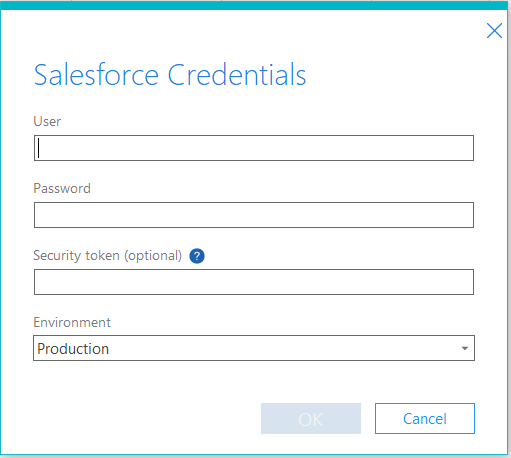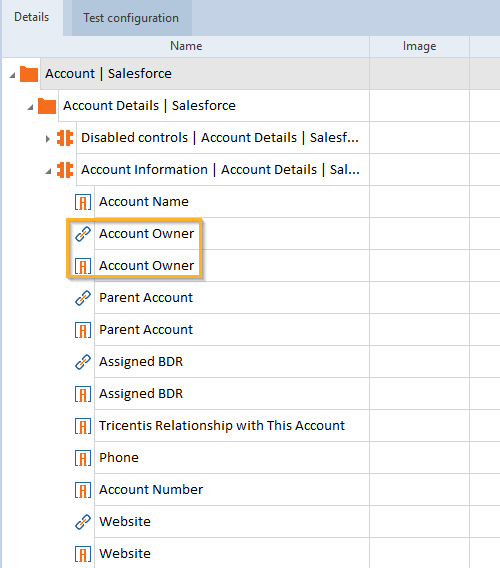Use Salesforce Scan
You can scan Salesforce in one of the following ways:
-
Using Tosca XScan. In this case, you scan Salesforce like any other application: open the respective Salesforce page and manually select the controls that you want to steer.
-
With the Salesforce Scan. Salesforce Scan connects to your Salesforce instance and automatically creates Modules from all controls that can be accessed.
This chapter explains how to use the Salesforce Scan.
For more information about Modules created with the Salesforce Scan, see the follwoing topic:
Prerequisites
To use the Salesforce Scan, you must fulfill the following requirements:
-
Have valid Salesforce credentials.
-
Have the necessary permissions for your Salesforce instance. You need the profile and permission to read and access metadata API calls from the Salesforce SOAP API: API Enabled and Modify All Data.
-
The machine on which you run Tosca Commander is within the trusted IP range. If it isn't, you need a valid Salesforce security token.
For the best results, Tricentis recommends using an administrator profile for the scan. Using an administrator profile provides the following advantages:
-
Gives you access to a superset of Modules you need to start building tests.
-
Allows you to verify data security across Profile and Permission set subsets, for example, validate that a user cannot see a field.
-
Ensures a high level of Module reusability across the Org.
If you use a non-administrator profile, you can only retrieve Modules that you have access to. This can result in missing fields and tabs needed to complete the test cases.
Scan Salesforce applications with Salesforce Scan
To perform the scan, follow the steps below:
-
In Tosca Commander, go to the Modules menu and click Scan->More->Salesforce Scan.
Alternatively, right-click the Modules folder and select Scan->More->Salesforce Scan from the context menu.
-
In the subsequent dialog, enter your Salesforce credentials. The security token is only optional if the machine on which you run Tosca Commander is within the trusted IP range.
-
For Environment, select either Production or Test depending on which environment you want to scan.

Enter Salesforce credentials
-
Click OK.
-
In the subsequent Select Modules dialog, select the Salesforce objects that you want to include in your scan.

Select Modules to scan
-
Click Scan.
The Salesforce Engine 3.0 then performs the following actions:
-
It connects to your Salesforce application via the Salesforce SOAP API.
-
It scans your applications and builds the layout for the Module structures.
-
It creates Modules for all Salesforce controls it can access via the API.
-
It saves the newly created Modules into the Modules folder.
As a result, you can use these Modules in your TestCases.

|
If you want to automatically log into your Salesforce instance during testing, ensure that you create a TestStep from the Login I Salesforce Module (use this Module to log in to your Salesforce site). If you want to navigate your Salesforce instance during testing, ensure that you create a TestStep from the Navigation I Salesforce->App Launcher I Lightning Modules. If you want to automatically log out of your Salesforce instance during testing, ensure that you create a TestStep from the Logout I Salesforce Module (use this Module to log out from your Salesforce site). Note that this feature is only available for Salesforce Lightning Experience. |
Salesforce Scan: Special controls
You can use all Salesforce Engine 3.0 controls with Salesforce Scan.
Link type controls in the read only Details view appear as both links and labels for compatibility reasons. Tricentis recommends using the labels to navigate the links. To do so, use the click operation {CLICK} on the labels.

Salesforce Modules

|
Unlike for standard link type controls, the AssociatedLabel value of custom links is the link itself, not the label. |